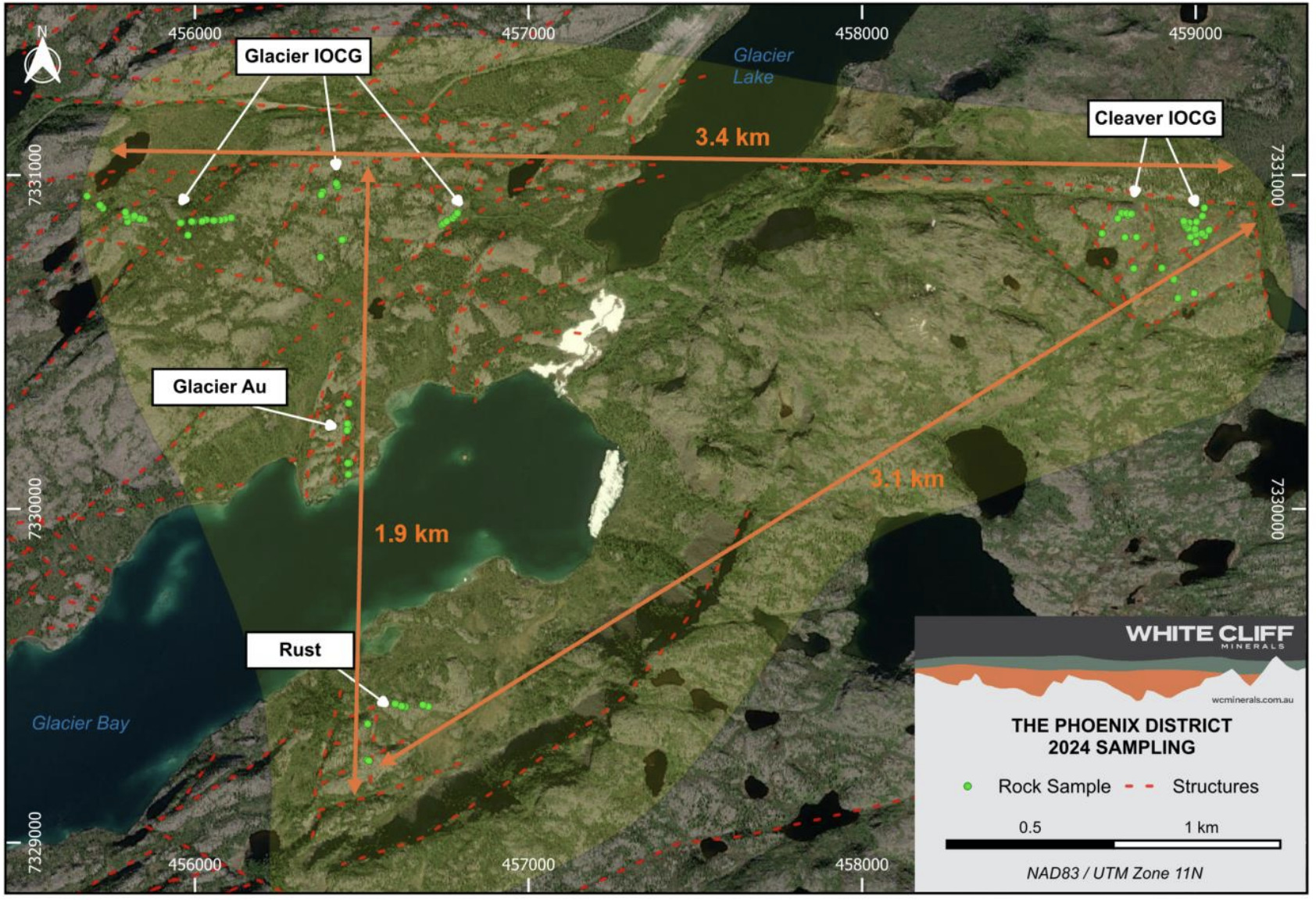WCN’s high-grade copper, gold rock chips at Phoenix outline potential scale of Great Bear Lake

Rock chip sampling results at the Phoenix area have highlighted the high-grade, large-scale nature of the Great Bear Lake project. Pic: Getty Images
- Rock chip sampling returns high-grade copper, gold and silver at the Phoenix target at the Great Bear Lake project
- Results of up to 42.6% copper, 38.2g/t gold and 310g/t silver highlight its large-scale, high-grade potential
- Assays pending for rock chips at the five other project areas
Special Report: Rock chip sampling has underscored the large-scale, high-grade potential of White Cliff Minerals’ Great Bear Lake project in Canada’s Northwest Territories after returning up to 42.6% copper, 38.2g/t gold and 310g/t silver.
The first batch of assays were returned from the district-scale Phoenix mineralised region, one of six project areas sampled at the project, with results both confirming historical results and significantly expanding areas of known IOCG and epithermal mineralisation.
White Cliff Minerals (ASX:WCN) notes that mineralisation has now been identified along a >3.4km east-west structural corridor at Phoenix with extensive IOCG and phyllic characteristics identified along the entire length.
It also noted that better results include 42.6% copper, 2.28g/t gold, 159g/t silver and 0.36% cobalt as well as 39.5% copper, 3.54g/t gold, 181g/t silver and 0.23% cobalt along a 1.1km intensely mineralised east-west structure while a broad outcropping 785 x 460m epithermal alteration zone returned 6.31% copper, 28.2g/t silver, 0.468g/t gold and 440ppm cobalt.
An additional nearby 215m north-south outcropping sulphide rich quartz vein returned high grade mineralisation with best results of 38.2g/t gold, 76.5g/t silver and 4.16% copper as well as 29.7g/t gold, 121g/t silver and 2.55% copper.
“This initial batch of rock chip assays from Phoenix, the first project area to be sampled due to the proximity to the existing large airstrip at Great bear, has delivered outstanding initial results,” WCN managing director Troy Whittaker said.
“Not only have we confirmed the historical results and sample locations, but we have expanded the area of known mineralisation at the project.
“This remote and previously underexplored area has turned out to be a much larger metal rich hydrothermal system than previously thought. Historically seen as a series of sporadic high-grade results, this maiden mapping and sampling programme has confirmed for the first time a continuity and significant lateral extent of the known mineralisation.
“Encouragingly Phoenix, which is only the first of 5 project areas we have received assay results for, shows all the necessary characteristics of a major high-grade discovery with two major IOCG hydrothermal systems less than 2km apart with high grade epithermal mineralisation interspersed between these two larger areas and along a total strike length of 3.4km.”
He added that the program validated the company’s pivot to the untapped resources of Canada’s far north.

IOCG province
The 2,900km2 Great Bear Lake project sits within the highly prospective Great Bear magmatic zone and was regarded by previous miners and explorers – and the Northwest Territories Geosciences Office – as having the highest potential for IOCG-U mineralisation in Canada.
Despite this, it saw little modern exploration.
Since acquiring the project, WCN has been pushing to rectify this shortcoming with a review of historical rock chips from the southern part of the project revealing an underexplored, district scale opportunity with evidence of IOCG and epithermal-style mineralisation.
Maiden field work also resulted in the visual observation of widespread IOCG and uranium mineralisation.
Coming activity
Whittaker expects to continue receiving assays over the coming month from the balance of work undertaken at Great Bear.
These include rock chips from the Spud Bay, Coastal Cu, Thompson and Sparkplug Lake epithermal, K2 IOCG and Mile Lake skarn targets.
Results are also expected from the MobileMT survey over the Great Bear Lake project, which will help progress targets to the drill ready stage.
This article was developed in collaboration with White Cliff Minerals, a Stockhead advertiser at the time of publishing.
This article does not constitute financial product advice. You should consider obtaining independent advice before making any financial decisions.

UNLOCK INSIGHTS
Discover the untold stories of emerging ASX stocks.
Daily news and expert analysis, it's free to subscribe.
By proceeding, you confirm you understand that we handle personal information in accordance with our Privacy Policy.








